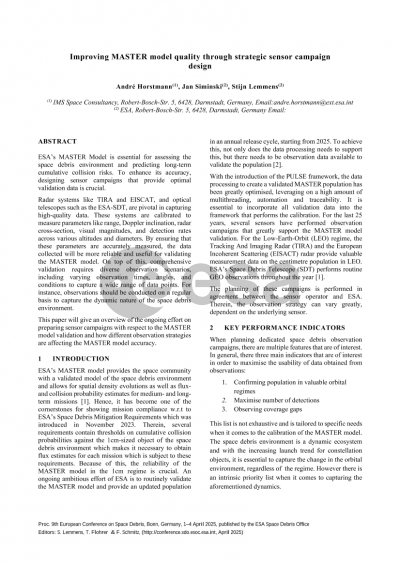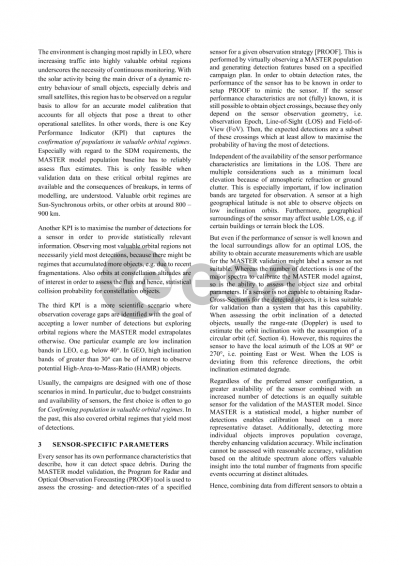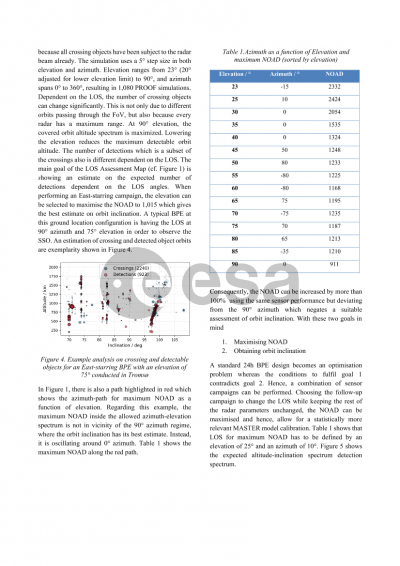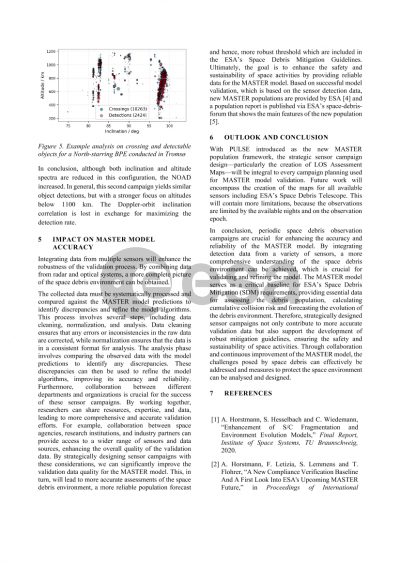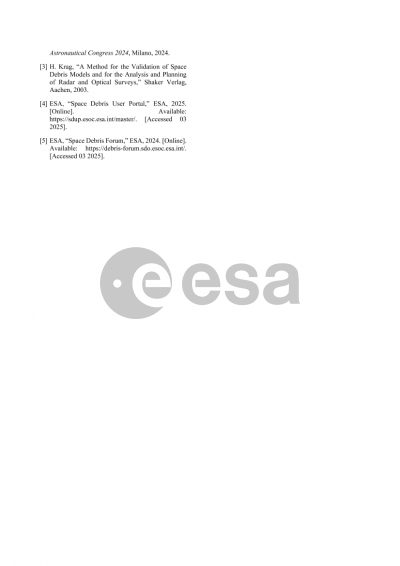Document details
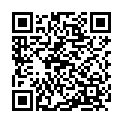
Abstract
The MASTER model is essential for assessing the space debris environment and predicting long-term cumulative collision risks. To enhance its accuracy, designing sensor campaigns that provide optimal validation data is crucial. This paper discusses key strategies for designing radar and telescope sensor campaigns to optimize validation data for the MASTER model. Radar systems like TIRA and EISCAT, and optical telescopes such as ESA-SDT, are pivotal in capturing high-quality data. These systems are calibrated to measure parameters like range, Doppler inclination, radar cross-section, visual magnitudes, and detection rates across various altitudes and diameters. By ensuring that these parameters are accurately measured, the data collected will be more reliable and useful for validating the MASTER model. On top of this, comprehensive validation requires diverse observation scenarios, including varying observation times, angles, and conditions to capture a wide range of data points. For instance, observations should be conducted on a regular basis to capture the dynamic nature of the space debris environment. Additionally, integrating data from multiple sensors will enhance the robustness of the validation process. By combining data from radar and optical systems, we can obtain a more complete picture of the space debris environment. The collected data must be systematically processed and compared against the MASTER model predictions to identify discrepancies and refine the model algorithms. This process involves several steps, including data cleaning, normalization, and analysis. Data cleaning ensures that any errors or inconsistencies in the raw data are corrected, while normalization ensures that the data is in a consistent format for analysis. The analysis phase involves comparing the observed data with the model predictions to identify any discrepancies. These discrepancies can then be used to refine the model algorithms, improving its accuracy and reliability. Furthermore, collaboration between different departments and organizations is crucial for the success of these sensor campaigns. By working together, researchers can share resources, expertise, and data, leading to more comprehensive and accurate validation efforts. For example, collaboration between space agencies, research institutions, and industry partners can provide access to a wider range of sensors and data sources, enhancing the overall quality of the validation data. By strategically designing sensor campaigns with these considerations, we can significantly improve the validation data quality for the MASTER model. This, in turn, will lead to more accurate assessments of the space debris environment, a more reliable population forecast and hence, more robust threshold which are included in the ESA’s Space Debris Mitigation Guidelines. Ultimately, the goal is to enhance the safety and sustainability of space activities by providing reliable data for the MASTER model. This paper will give an overview of the ongoing effort on preparing sensor campaigns with respect to the MASTER model validation and how different observation strategies are affecting the MASTER model accuracy.
Preview
